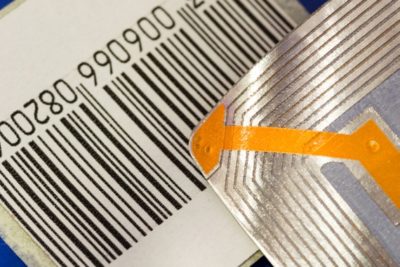RFID Asset Tracking And How It Works

In WWII, commanders used radiofrequency technology to track enemy aircraft. Today, the technology has evolved to accommodate other uses in asset-heavy consumer-based companies in manufacturing, retail, warehouse, and even the education system.
Why stop there? The business world is quickly adapting to RFID technology because of its many benefits, so quickly that the asset management market is climbing to reach $34.82 billion by 2026.
Manual asset management is typically shoddy or doesn’t happen at all. It’s time businesses, especially growth-stage businesses, understand what RFID asset tracking is and how it works.
What Is RFID Asset Tracking?
Radiofrequency Identification tracking automatically locates and manages business assets using tiny computers that can be attached to products. Tags are then read with a scanner to track inventory and product movement.
RFID is popular in asset tracking management systems because it’s cost-effective and efficient. Usually, an RFID tag is loaded with asset data and attached to that asset for tracking. The RFID tag has radio waves that pulsate repeatedly. An RFID reader then uses these waves to capture the data stored in the RFID tag. The data, in this case, are used to identify information about the asset, such as its name and condition.
Consider a piece of equipment that gets faulty on the move and needs repairs. Modern asset tracking software is cloud-based to make collecting, storing, and using the asset data easier since they are in a central location. A cloud-based system also allows you to scan and edit the asset data in real-time.
An automated system also reduces human error and redundancy, enables multiple asset tracking capabilities, and increases inventory accuracy and asset visibility.
How RFID Asset tracking Works
The RFID asset tracking process takes place in four stages:
- Data storage
- Signal identification
- Signal reading
- Signal transmission
First, you must assemble the proper equipment, including the RFID tags, an antenna, an RFID reader, and a computer or mobile digital device with asset tracking software. Then identify important information about your assets like their cost, location, name, and condition. That is the information you attach to the asset after storing it on the RFID tag using a unique Electronic Product Code (EPC). The tag has an electromagnetic field that transmits the asset data, whether stationary or moving between locations.
The antenna is the tool that identifies the signal sent by the RFID tag. Placing these antennas in different locations within your business infrastructure allows you to track your assets as they move between departments and floors in your company.
Connect your antenna to the RFID reader since the tool receives the data from your RFID tag to help you identify the location of your asset. Once the RFID reader collects any asset data, it is transmitted into your asset tracking system, where it is stored, used, or evaluated.
Depending on your system, your asset reader can store information unique to your business needs, like your asset history and maintenance needs.
Types Of RFID Tags
There are two primary types of RFID tags used for asset tracking: active and passive tags. Active RFID tags use batteries to transmit signals, making them more common for tracking moving assets like vehicles in real-time. These tags can transmit frequencies up to 150 meters, and they are more expensive than passive RFID tags.
On the other hand, the passive RFID tags are powered by the antenna or the RFID reader since they lack an internal power source. These tags are commonly used for tracking supply chain management, inventory, and access control.
Passive RFID tags are also lighter, smaller, and more durable. Therefore, their read range is not as strong as active tags. Additionally, certain materials are not suited to the tags, resulting in interference.
An uncommon option is a semi-passive RFID tag with an internal battery, an antenna, and an RFID chip. The battery in a semi-passive tag allows accurate time tracking, but the signal range is lower than that of an active RFID tag.
Therefore, you should use a semi-passive tag only if your assets are close. This is why the tags are often used for conditioning and monitoring the environment, like checking the temperature of sensitive goods in transit.
Remember that different tags have different frequency levels: they can be high or medium. Another thing to keep in mind when choosing an RFID asset tracking system is the interaction with the assets.
Conclusion
If your business success relies on the availability of assets like IT devices, machinery or tools, and vehicles, then understanding RFID asset tracking is imperative. Enterprise and industrial assets come at high costs, which, in turn, necessitates monitoring and tracking of said assets. Having information about the condition of your asset at hand allows you to plan for maintenance, which ensures your operations run efficiently. It also helps you forecast future business growth. This is where asset tracking comes in.
FAQs
What is RFID asset tracking?
This is automated system software that tracks the location of all your business assets in real-time. RFID uses tags to identify and monitor assets.
What are the types of RFID asset tracking?
The two primary ones are passive asset tracking and active asset tracking. In some cases, you will also find the semi-passive asset tracking system that carries characteristics of the passive and active asset tracking systems.
How does RFID asset tracking work?
Asset data is stored on an RFID tag which transmits electromagnetic signals between the asset, an antenna, and an RFID reader to track the asset. Data collected from the asset is then stored in the Asset tracking software.
